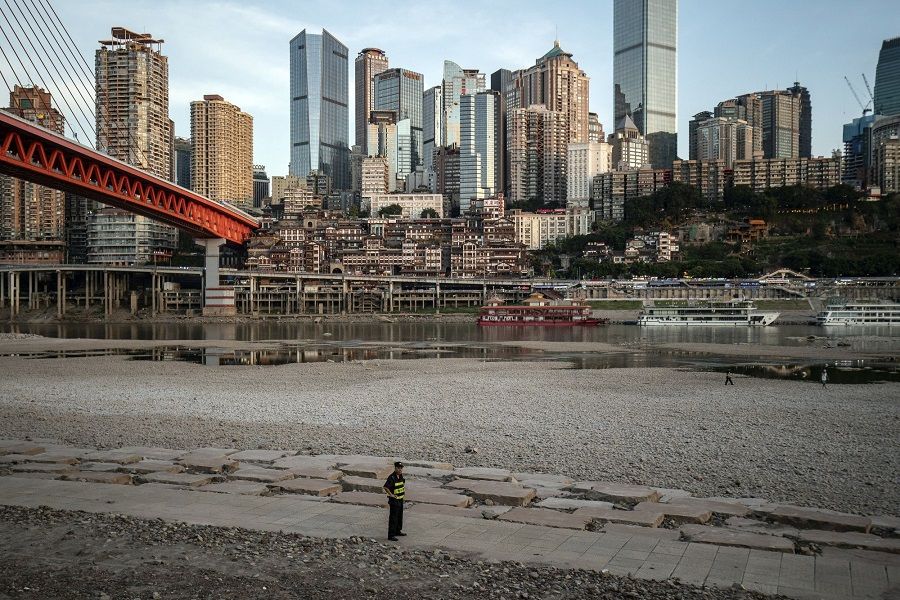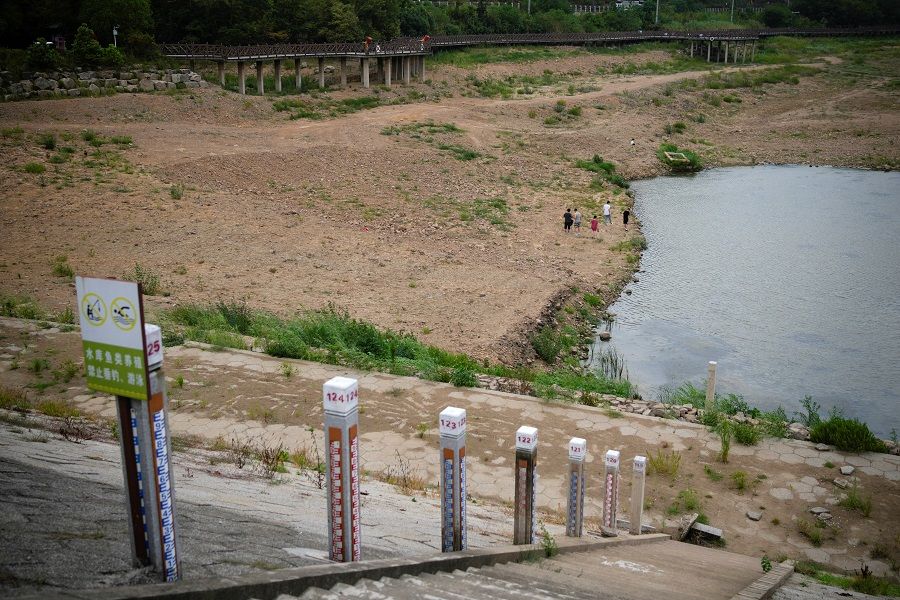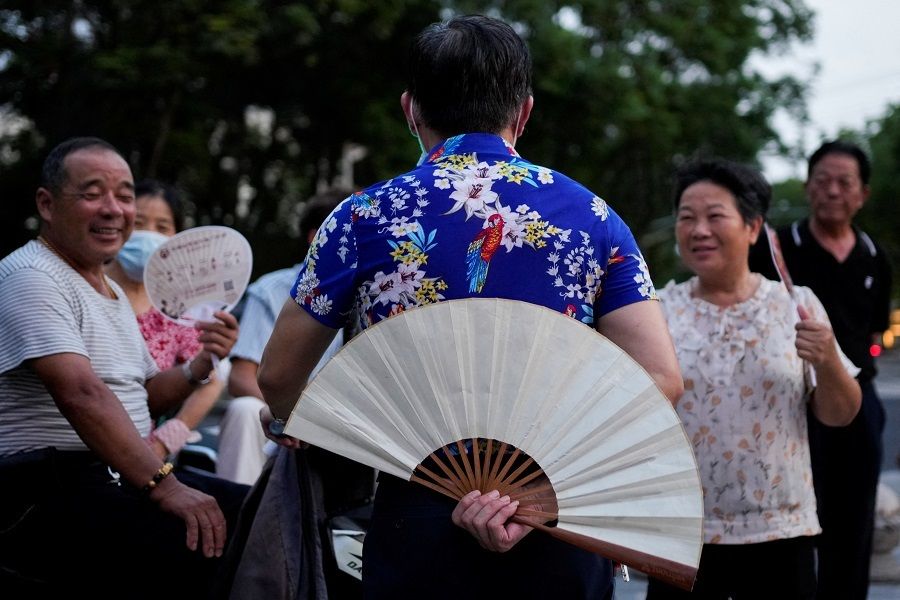Electricity woes further dampen China's hopes of economic recovery

The recent heatwave in China has been unbearable for its people and even livestock.
Media outlets in Anhui province reported that hens have been stressed from the hot weather, causing a decrease in the eggs laid, and egg prices have increased due to the shortage. Farmers have installed air conditioners in chicken coops to cool down the hens to maintain production - but there is little improvement.
Record heat and dried rivers
Record high temperatures have been the norm this summer. Data from the National Climate Center shows that since June, the overall intensity of regional heatwaves in China has been at its strongest since 1961, when records began.

Just how warm has it been this summer? From 1 June to 15 August, the average number of high-temperature days in China was 12 days or 5.1 days longer than the same period in other years. High-temperature days in the northern, eastern and southwestern regions of China are generally above 20 days; Henan, Hubei, Anhui, Jiangsu and Chongqing exceeded 30 days. Data also show that the area affected by temperatures above 40 degrees Celsius has reached 1.365 million square kilometres, while the highest temperatures recorded in several cities have nearly hit 45 degrees Celsius.
To make matters worse, China is also experiencing a drought amid its worst heatwave in 60 years. Summer is normally the season with the most precipitation, especially in the Yangtze River Basin. Various areas would brace themselves for severe floods, but the Yangtze River Basin is in fact drying up during this year's flood season.
... concerns of severe power shortages are rising as water levels at hydropower reservoirs decline.

Over the past six months, the Yangtze's water levels have been falling, and images of Poyang Lake's cracked and exposed lakebed have made the rounds on Chinese media. Several rivers in Chongqing have also dried up, and the cracked riverbed of the Jialing River, a tributary of the Yangtze River in Chongqing, is exposed. Netizens even satirised that Jialing River (嘉陵江 jialing jiang) is so scorched that it has become Jialing "gong" (嘉陵工, jialing gong, 江 jiang without the water radical (氵) is 工 gong).
Power crunch beyond the provinces affected by the heat
Extreme heat and drought in Sichuan have led to a surge in power consumption as people increase their use of air conditioners to cool down. At the same time, concerns of severe power shortages are rising as water levels at hydropower reservoirs decline.
Sichuan is originally a major energy province with abundant water resources and relies on hydropower to generate 80% of its power. It is also a major hydropower exporter, and regions such as Shanghai, Jiangsu and Zhejiang partly rely on hydropower bought from Sichuan.

But Sichuan is bearing the brunt of the power crunch this time. To safeguard people's livelihoods and power supply, several local factories were forced to halt production due to power cuts. Apple supplier Foxconn, Japanese auto giant Toyota, German automobile manufacturer Volkswagen and other factories of foreign enterprises in the province have been affected to varying degrees. Even the Sichuan factories of two major Chinese battery kings, CATL in Yibin and BYD in Chongqing, were not spared.
The power crunch has also affected the lower reaches of the Yangtze River. Shanghai announced that it would switch off decorative lights along the Bund riverfront for two days from 22 August. Furthermore, in an official letter to the Sichuan authorities that has been circulating online, Shanghai hopes that Sichuan would prioritise electricity supply to certain enterprises, as Tesla and SAIC have told the Shanghai government that they would have difficulty maintaining production at their Shanghai factories if the power crunch continues to impact their suppliers in Sichuan.
... both power shortages have exposed China's energy security challenge, raising concerns about whether the supply-demand imbalance in the electricity market will become a new normal in the years to come.

This power crunch brings to mind the power outage China suffered in the third quarter of 2021. Back then, a large number of manufacturing plants along the southeast coast suspended production due to power restrictions, while some cities in the northeast experienced power cuts without warning. The power crunch also hurt China's economic growth in the third quarter of that year, which slowed to 4.9% year-on-year.
If China's hasty "dual control" energy consumption policy was said to have caused the power crunch last year, then the unpredictable weather conditions could be to blame this time. Nonetheless, both power shortages have exposed China's energy security challenge, raising concerns about whether the supply-demand imbalance in the electricity market will become a new normal in the years to come.
Huge challenges to economic recovery
While the two instances of power outage stem from different causes, they have both become an obstacle to China's economic growth, and have come at a bad time when the Chinese economy is encountering numerous setbacks this year.
China has yet to emerge from the shadow of the Covid-19 pandemic since the first half of the year, and its real estate sector, which has driven economic growth, is still in a slump. Now that another power shortage has come, China's economic growth in the third quarter could be hit again.

China's economic trend is always at the centre of attention. After all, when the world's second largest economy sneezes, the world catches a cold. In the past, international public opinion would occasionally talk about the "China (economic) collapse" theory. But such assessments are often too rash because of preconceived notions or a lack of understanding of China, and ultimately become the story of the boy who cried wolf.
Since the start of the year, China's economy showed signs of slowing and sceptical voices have resurfaced. Former US Treasury Secretary Lawrence H. Summers recently told Bloomberg in an interview that just six to 12 months ago, it was taken as "axiomatic" that the "Chinese would surpass the American economy in terms of total GDP at market exchange rates". However, this is now "much less clear".
Summers also listed four challenges that China faces: a "huge" financial overhang; a lack of clarity on what dynamics will propel future growth; the "growing Communist Party involvement in a wider range of enterprises"; and a shrinking working-age population along with a growing elderly population.
While it may be too early to tell if the Chinese economy will surpass the US's economy, China is indeed facing huge challenges. Putting aside changes in China's demographic structure and other long-term problems, the short-term problems involving the pandemic, weak consumption, the real estate slump, and the recent power shortage have already added more obstacles to China's economic growth. Indeed, the outlook is not optimistic.
Related: Floods in China: Can the Three Gorges Dam weather 'once-in-a-century massive floods in the Yangtze River'? | Zhengzhou floods: Netizens berate local government and media for inadequate response | China's power outages: Are local governments' energy conservation efforts going overboard? | Why China will continue to experience power cuts | Is a zero-Covid policy adversely affecting China's economic recovery? | China to prioritise economic stability ahead of CCP 20th Party Congress
